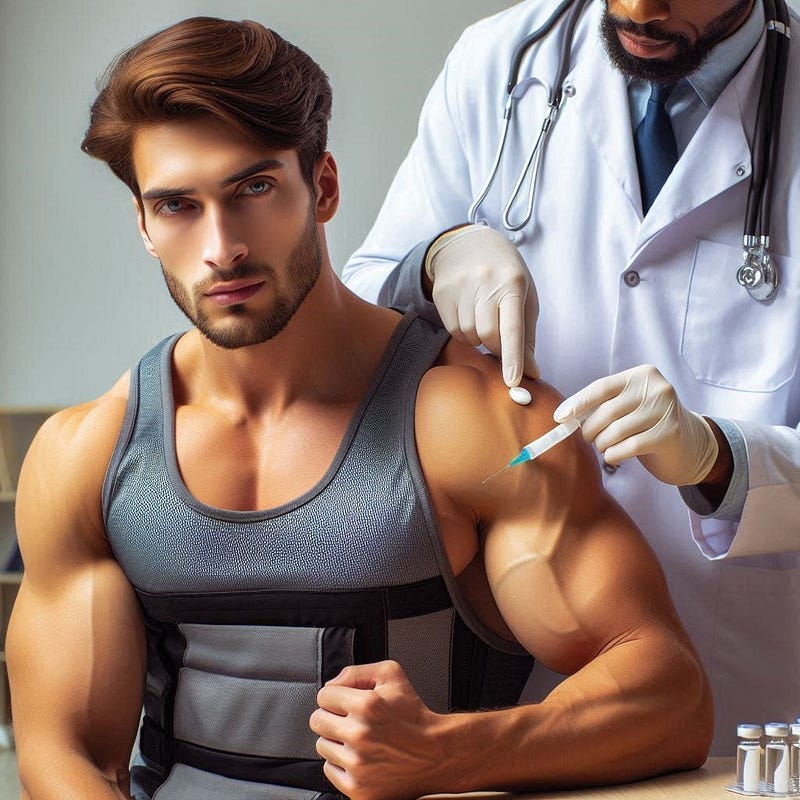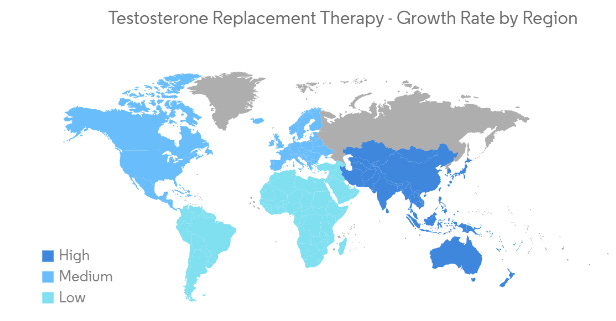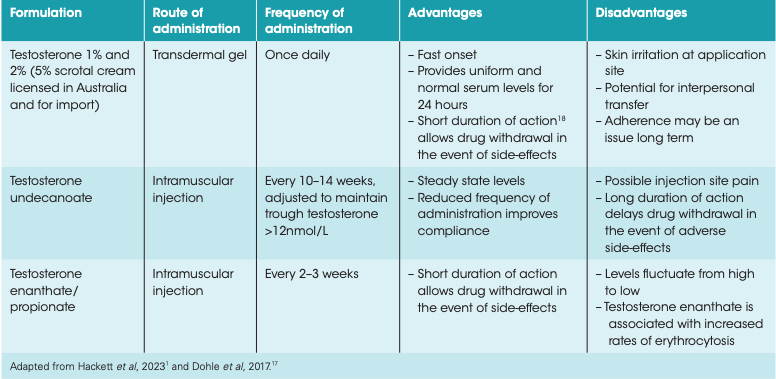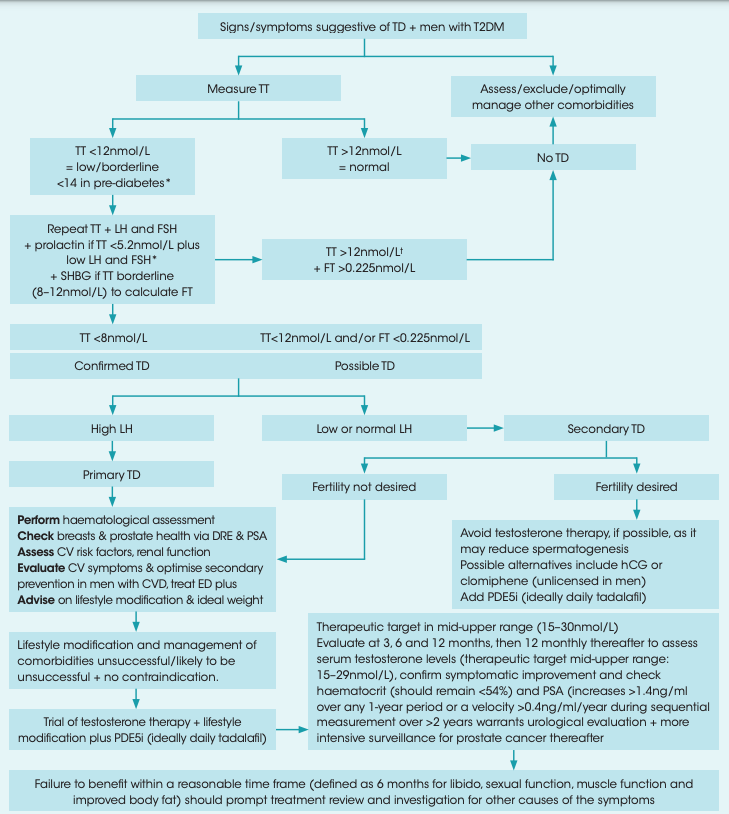The TRT Playbook
A Comprehensive Insight into Market Trends, Patient Pathways, and Breakthrough Opportunities for Growth and Innovation
Foreword
Whilst I am a clinical doctor, I’m not (currently) involved in prescribing testosterone replacement therapy (TRT), but the space has certainly caught my attention.
While I haven’t yet entered this field, I have not ruled it out — whether that means launching my own startup or joining an existing startup… Or as an Angel Investor into emerging startups looking to enter/innovate into the space.
Contents
In this deep dive, I’ll walk through the landscape of the TRT industry: the market size, 16 key players, their differentiating factors, their business models, pricing structures and what other services they provide.
I will then talk through what an ideal patient pathway looks like — from diagnosing low testosterone to ongoing treatment
I’ll also touch on microdosing, an approach that falls outside standard medical guidelines, but one that’s gaining traction in certain circles (think sports, PEDs, recovery post-cycle).
Lastly, we’ll explore the gaps and opportunities for innovation in this evolving space.
Lets go!
The TRT Market
Market Size, Growth and Distribution
The global TRT market was valued at $1.9 billion in 2022 and is projected to reach $2.8 billion by 2030, growing at a compound annual growth rate (CAGR) of 4.60%. This growth is largely said to be driven by increasing awareness of low testosterone symptoms, an ageing population, and the convenience of telemedicine services.
Notably, the market’s expansion can also be attributed to the often-overlooked decline in testosterone levels among men globally. Studies have shown that testosterone levels in men have been steadily declining for decades. For example, research indicates that men’s average testosterone levels have dropped by about 1% per year since the 1980s. This decline, also known as the rise in testosterone deficiency (and rise in the total number of potential patients / customers), is exacerbated by factors such as sedentary lifestyles, increased obesity rates, and environmental toxins. Consequently, there is an increasing number of males presenting with testosterone deficiency symptoms, leading to a greater demand for TRT solutions.
North America currently dominates the TRT market in terms of revenue, with the United States being the largest contributor. Europe follows as the second-largest market, with countries like the UK and Germany showing significant growth. The Asia-Pacific region is expected to experience the highest growth rate in the coming years, driven by increasing healthcare expenditure and growing awareness of men’s health issues.
Market Players
The largest player is Hims & Hers in the US, with a MCap as of writing this of $4.96B (Total funding $233.2M). In the UK, the largest seems to be Manual, which is a Series A startup with total funding of £56.2M.
I have made a comparison table of 16 companies in the TRT-space, including a brief description of each company, business model, it’s pricing structure, any other services/products the company sells, and any further notes I have wanted to add. The companies I have chosen are not necessarily the 16 largest, but were definitely the 16 most easily found on Google.
Unfortunately, the post becomes too long for Substack when I include the table! Here is a link to a Markdown I made for it: Click Here
My key insights:
1. Telehealth Dominates TRT Delivery
Almost every company in the table operates through telemedicine, allowing patients to access consultations and treatments remotely. Perhaps there is a bit of survivorship bias, or perhaps this demonstrates that the winners in the market are those that significantly reduce barriers to entry for patients.
2. Subscription-Based Models are the Norm
Most companies offer subscription models, making testosterone replacement therapy accessible with predictable monthly fees. This model provides recurring revenue for businesses and enables customers to spread out their healthcare costs over time.
3. Range of Pricing Options
TRT pricing varies significantly across providers, from $40 per month to over £400 for initial consultations in more premium offerings. This suggests a broad spectrum of patients being targeted, from those seeking affordability to those looking for premium, holistic care. Also, Pricing structures vary widely, with some companies offering monthly subscriptions and others charging separately for consultations, tests, and medications.
4. Holistic Men’s Health Services on the Rise
Several companies like Manual, Opt Health, and Marek Health offer services beyond just TRT, such as hair loss treatments, fertility services, and general wellness optimisation. This reflects a growing trend toward integrated men’s health solutions, with companies aiming to become a one-stop shop for various health needs.
5. Premium Services Focus on Personalisation and Wellness
Higher-end providers like RegenX Health and Marek Health focus on wellness optimisation and anti-ageing, targeting a more affluent clientele with personalised, holistic health programmes. This premium segment appeals to those willing to pay more for individualised care and extended service offerings like weight loss and anti-ageing.
6. UK vs. US Market Differences
The UK-based companies (Manual, Balance My Hormones, Optimale) have different regulatory environments and pricing models compared to the US counterparts. Pricing in the UK tends to be more straightforward, while the US market often includes separate fees for lab tests and consultations, suggesting greater price segmentation in the US.
Also note that there don’t seem to be many large TRT companies elsewhere? There is heavy scope to scale through Europe, UAE etc.
7. Focus on Convenience with At-Home Diagnostics
Companies like Hone Health and Maximus Tribe offer at-home lab testing kits, capitalising on the demand for convenience in healthcare. This is a crucial differentiator in the telehealth space, providing patients with an easy way to start treatment without visiting a clinic.
8. Niche TRT Providers Are Finding Growth Potential
Companies such as TRT Nation and Viking Alternative are focusing on a niche yet scalable market by offering affordable and accessible TRT solutions via telemedicine. This suggests a strong growth potential in catering to a price-sensitive demographic that values convenience and lower-cost treatment options.
9. Opportunities for Service Expansion
Many of these companies could expand services into other health areas like mental health, weight loss, or fitness coaching, which are natural extensions of their current offerings. Companies like Maximus Tribe are already experimenting with lifestyle-based testosterone enhancement, which offers room for innovation.
10. Investment Opportunities in Integrated Health Platforms
The companies that integrate multiple healthcare services into their platforms (e.g., HIMS, Manual, Defy Medical) present strong investment opportunities. As the demand for digital health grows, these platforms can leverage their existing customer base to cross-sell complementary services, creating a potentially lucrative market for investors looking to invest in full-spectrum telehealth platforms.
Creating a clinically-approved pathway for TRT prescribing for both public and private healthcare
Quick note on the ‘normal’ range
There are actually different ranges considered as ‘normal.’ The attributed normal range changes depending on the lab taking the test, and the country that you are in…
Usual NHS range:
Male: 6–27 nmol/L
Female: <2.7 nmol/L
Average US range:
Male: 10 to 35 nmol/L
Female: 0.5 to 2.4 nmol/L
In males, after the age of 40 testosterone levels generally decline by 1 to 2% on average each year. 90% of men with low testosterone remain undiagnosed.
The symptoms of testosterone deficiency are as follows:
Pathway for Delivering TRT:
1 — Patient Onboarding and Initial Assessment
Consultations: Offer both digital and in-person consultations with registered medical professionals.
TRT assessment portal: Create a digital portal where patients provide detailed information on symptoms (fatigue, low libido, mood changes), medical history, and lifestyle.
Understanding Intent: Assess why the patient wants TRT. Are they seeking to correct hormone imbalances from past steroid abuse, or are they symptomatic of hypogonadism?
Mental Health Screening: Conduct a thorough mental health evaluation, focusing on potential body dysmorphia, addiction behaviours, or psychological dependence on anabolic steroids.
Physical examination considerations: height, weight, BMI, waist circumference, degree of body hair, abnormalities of penis/testis/scrotum, DRE
2 — Initial Diagnostic Testing:
Comprehensive blood tests are mandatory before any diagnosis:
Morning total testosterone levels (measured on at least two occasions, preferably 4 weeks apart).
Additional tests for LH, FSH (pituitary function), SHBG, free testosterone, prolactin, thyroid function, liver function, lipid profile, and haematocrit.
PSA for men over 40 or those with a family history of prostate cancer.
LH, FSH to evaluate pituitary function and distinguish between primary and secondary hypogonadism
SHBG to calculate Free Testosterone
Total testosterone levels are not as useful as free testosterone. The latter is the one you should want to optimise.
Note: Physiological testosterone follows a diurnal rhythm. Therefore measurements are most useful if tests are taken around the same time on each occasion e.g. 07:00–11:00am
Diagnostic packages can be sent to the patient’s home for remote blood collection or arranged at a partner lab for convenience.
To have a low ‘entry-fee’ for consumers, it might be beneficial to have two blood tests prior to assessment. The first would be a Total testosterone test, to exclude those with a normal level. If Total testosterone is low or borderline, then the whole panel would be taken.
However, for those who want the whole panel from the start (note that I did mention that free testosterone is much more useful), they should be allowed to exclude the initial test and go straight to the full-panel.
3 — Personalised Treatment Plan
Consultation with a Specialist:
Following diagnosis, patients meet with a TRT-specialised clinician (in-person or remotely) to discuss results and treatment options.
Emphasise shared decision-making, with thorough discussions around:
Benefits: improved mood, energy, muscle mass, and sexual function.
Risks: potential for polycythaemia, cardiovascular events, prostate issues.
Exclusion criteria: active cancer, untreated sleep apnoea, or severe psychiatric issues must be identified and managed.
Family history of prostate or breast cancer must be factored into decisions.
Fertility aspirations: Also consider the desire to have children
Tailored TRT Regimen:
The prescription depends on patient preference, lifestyle, and medical history. See below
Ensure the patient is aware that this is a long journey and a gradual process. A dose will be given, testosterone will be measured again, then the dose will be titrated upwards…
4 — Initial Treatment and Monitoring
Initial Dosing and Adjustment:
Start TRT with the lowest effective dose and titrate based on clinical response and blood levels.
Patients should be scheduled for regular blood tests after starting treatment to assess:
Serum testosterone levels.
Haematocrit, lipid profile, liver function tests, and PSA (as applicable).
Blood tests at: 6 weeks, 3 months, 6 months, 12 months.
Patient Education:
Patients are provided with comprehensive education materials (digital and paper) on how to administer their treatment, monitor side effects, and adjust their lifestyle to improve outcomes.
Offer 24/7 digital access for queries or concerns, improving patient satisfaction and adherence.
5 — Long-Term Care and Optimisation
Regular Monitoring Protocol:
Once stabilised, patients should have biannual consultations and regular blood tests every 6–12 months.
A focus on preventing complications:
Monitor haematocrit levels to avoid polycythaemia.
Regular cardiovascular assessments, particularly in older patients.
Mental health assessments to monitor for mood swings, anxiety, or depression (linked to hormonal changes).
Digital Monitoring and Support:
Utilise the digital platform to provide personalised feedback based on blood test results, symptoms, and patient-reported outcomes.
Automated reminders for medication administration, follow-up appointments, and blood tests.
6 — Psychological and Mental Health Support
Access to Counselling and CBT:
Offer integrated or signpost to mental health support for patients with a history of anabolic steroid abuse or psychological disorders (e.g., body dysmorphia).
Provide options for cognitive behavioural therapy (CBT) or addiction counselling where required.
Wellness Packages:
Complement TRT with additional wellness services, including nutritional counselling, personal training plans, and lifestyle coaching to promote overall health improvement beyond hormone replacement.
Could upsell, or provide free to increase user satisfaction. Dependent on how thorough these services are
7 — Scalable Model for Growth
Subscription-Based Service:
Implement a subscription model where patients pay a flat monthly fee that includes all consultations, blood tests, medications, and support services.
Offer tiered services (e.g., basic TRT vs. premium packages with enhanced wellness offerings)
Clinic Expansion:
Begin with flagship clinics in major cities, focusing on regions with higher demand for private healthcare.
Expand via partnerships with independent labs, gyms, or health centres to offer remote blood testing and consultations across the country.
Partnerships and Brand Building:
Collaborate with influencers, sports organisations, or fitness communities to build brand credibility and trust.
Maintain strong clinical governance and ethical standards to distinguish the brand as a reputable, safe provider in an industry sometimes associated with unregulated treatments.
Prescribing Protocol for TRT:
1 — Eligibility and Diagnostic Criteria
Age: Typically men over the age of 30 with documented symptoms of hypogonadism or significant hormone imbalances (e.g. caused by past anabolic steroid abuse)
Lab Confirmation: Morning total testosterone levels < 12 nmol/L on at least two occasions, preferably 4 weeks apart
Symptomatology: Presence of key symptoms such as low libido, fatigue, depression, or loss of muscle mass.
Exclusion Criteria: Active or suspected prostate cancer, severe cardiovascular disease, polycythaemia, untreated sleep apnoea, or untreated psychiatric conditions. Consider family history of above.
2 — TRT Options
Intramuscular Injection:
Testosterone enanthate or cypionate (100–200 mg/2 weeks).
Testosterone undecanoate (Nebido®) 1000 mg/10–14 weeks.
Transdermal Gel or Patches:
Daily application of 50–100 mg gel (Androgel® or Testogel®) or patch for non-invasive treatment.
The perfect TRT protocol should as closely replicate the patient’s natural physiological levels at their peak. To achieve this, usually one starts at a low dose and aims to titrate up over time.
If you are aromatising too much testosterone, then your dosage might be too high. I’m not entirely sure that aromatase inhibitors are within our medical guidelines, so I will not be delving into them here. Same as for HCG (an LH analogue). Discussion will remain on Testosterone.
3 — Follow-Up and Monitoring
a. Blood tests every 3–6 months during the first year, then annually, assessing testosterone levels, haematocrit, liver function, and lipid profile.
b. Review consultations every 3–6 months to adjust dosage or switch to alternative formulations based on clinical response.
c. Psychiatric and psychological evaluation on a routine basis, especially for patients with prior anabolic steroid use.
BSSM Pathway
Considerations regarding TRT dosing outside standard medical guidelines
In clinical practice, TRT is typically prescribed based on standardised dosing regimens aimed at achieving stable serum testosterone levels within the normal physiological range. However, there are nuanced approaches to TRT dosing, particularly with regard to reducing side effects such as aromatisation (conversion of testosterone to oestrogen) and 5-alpha reductase effects (conversion of testosterone to dihydrotestosterone or DHT).
These are not explicitly found in medical guidelines, so while I’m happy to share some thoughts for informational purposes, I’m not putting my medical licence on the line for them!
Micro-dosing
The concept of “micro-dosing” refers to administering smaller doses of testosterone more frequently, rather than using larger doses at longer intervals. This strategy arguably has several potential advantages over guideline dosages, particularly in mitigating unwanted side effects associated with TRT:
1. Reduction of Aromatisation (Testosterone to Oestrogen Conversion)
Testosterone can be converted to oestrogen via the enzyme aromatase, particularly in adipose tissue. This conversion can lead to increased levels of oestradiol, potentially causing side effects such as gynaecomastia (breast tissue development in men), water retention, and mood swings.
Larger doses of testosterone given at longer intervals can cause peaks in serum testosterone levels, leading to more aromatisation during the peak periods.
By administering smaller, more frequent doses, the peaks and troughs of testosterone levels are minimised. This reduces the chances of high serum testosterone concentrations that can trigger increased aromatisation.
2. Reduction of 5-Alpha Reductase Effects (Testosterone to DHT Conversion)
Testosterone is also converted to dihydrotestosterone (DHT) via the enzyme 5-alpha reductase, particularly in the skin, liver, and prostate (locally).
Elevated levels of DHT can contribute to androgenic side effects, such as acne, male pattern baldness, and prostate enlargement.
Similar to aromatisation, when large doses of testosterone are given intermittently, the higher peak levels may lead to increased conversion to DHT.
Smaller, more frequent doses reduce the testosterone surges that drive DHT production. This results in lower average DHT levels, potentially decreasing androgenic side effects like acne and hair loss.
3. Improved Symptom Control and Patient Experience
Anecdotally, TRT patients report that testosterone fluctuation causes symptoms including fatigue, irritability, and mood swings
Micro-dosing ensures a more consistent release of testosterone, which can lead to more stable mood and energy levels, providing better overall symptom control.
However, increased dosing frequency requires more injections or applications, which may be less convenient for patients, resulting in adherence issues.
Again, I am not in the TRT space (yet?). I am not risking my medical licence to ‘recommend’ the above, as opposed to standard guidelines. It is for informational purposes only.
Does testosterone actually increase the risk of prostate cancer?
Short answer: it’s debatable.
Under NHS guidelines, the answer is a yes. Higher free testosterone will increase the risk of prostate cancer. However, there is a possibility of detection bias in this.
Some studies show that using TRT to maintain serum T levels within the ‘normal range’ actually decreases the risk of prostate cancer.
Papers have been included in the references, for one to look into this further.
Key Considerations for a Private Company Entering the TRT Space:
1 — Regulatory Compliance:
Ensure compliance with the Care Quality Commission (CQC) in England or equivalent regulatory bodies in the operating regions.
Adhere to General Medical Council (GMC) prescribing guidelines and the British Society for Sexual Medicine (BSSM) standards.
Establish proper licensing for handling and prescribing controlled substances like testosterone
2 — Patient-Centric Model:
Offer a seamless digital and physical infrastructure for patient interaction, from initial consultation to follow-up care, using telemedicine and in-person clinics.
Create a subscription-based service with transparent pricing, including diagnostic tests, treatment plans, and regular follow-ups.
3 — Technology Integration:
(see next section)
Will likely be much easier than in the public sector
Would bring with it a greater patient / customer experience (if done right)
Areas for Innovation within the TRT space
Digital health platform/App: streamline patient onboarding, assessment, and follow-ups. This could be developed to become a comprehensive platform that not only manages TRT but also integrates with other aspects of men’s health, including nutrition, fitness, mental health, and sleep tracking, for a holistic approach to wellness.
Predictive Analytics for Treatment Outcomes: Utilising big data and machine learning to analyse large patient datasets, predicting treatment outcomes and potential side effects based on individual patient characteristics.
Remote Monitoring and Smart Wearables: Develop wearable devices that can track testosterone-related biomarkers such as muscle mass, energy levels, mood, and heart rate. These devices could provide real-time data to physicians, helping them fine-tune treatment plans more quickly and accurately.
Microdosing Insights via Machine Learning: Use data analytics and machine learning to study the effects of micro-dosing TRT on testosterone levels (and also other biomarkers e.g. SHBG, oestrogen, cortisol), allowing for deeper understanding of the ideal dosage for balancing efficacy with side effects. This could provide more precise control over hormonal levels and minimise adverse effects.
Telemedicine Integration with Diagnostics: Innovate on the integration of at-home diagnostics with telemedicine, where patients can use self-testing kits and immediately send results to an online platform, receiving an instant treatment adjustment recommendation. This could simplify ongoing patient monitoring and care management.
Pharmaceutical Innovation for Advanced Drug Delivery Systems: Innovation in transdermal patches, gels, or implants that offer more consistent hormone release and improved absorption, reducing the frequency of application or injections
Microsampling Technologies: Advancing at-home blood testing methods, such as dried blood spot testing or microfluidic devices, to allow for more frequent and convenient monitoring of hormone levels
Psychological and Holistic Care Integration: Design a service that integrates mental health, lifestyle, and psychological support into TRT treatments. Many patients undergoing TRT also experience depression, anxiety, or stress, so adding mental health professionals could provide a more holistic approach to their care.
AI-Driven Drug Discovery: Apply AI for drug discovery and optimization of testosterone analogs that could offer fewer side effects, better bioavailability, or longer-lasting effects. This could lead to more efficient and safer forms of testosterone treatment, especially for long-term users.
Closing Remarks
I AM a doctor, but this is not to be taken as clinical advice. Go to your doctor / a TRT-specialist doctor. This is for informational purposes only
If anybody wants to discuss TRT with me, for academic or business purposes, please get in touch via LinkedIn
I exceeded the substack word-limit. So had to give a link to my comprehensive table instead
Follow my Medium and subscribe to my Substack for more deep-dives
Links
LinkTree https://linktr.ee/jsforidi
LinkedIn: https://www.linkedin.com/in/dr-jamil-shah-foridi/
Medium: https://drjams.medium.com/
Substack: https://substack.com/@drjams
Youtube: https://www.youtube.com/channel/UCxHnvpvKuPbB1380X0h8ybA






